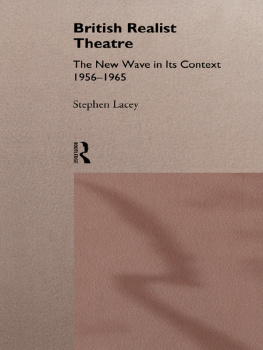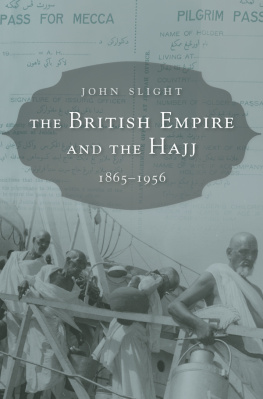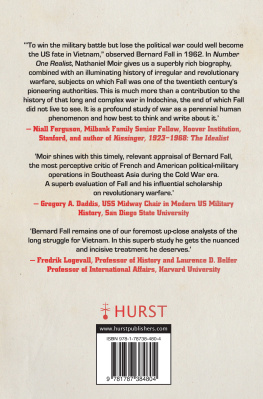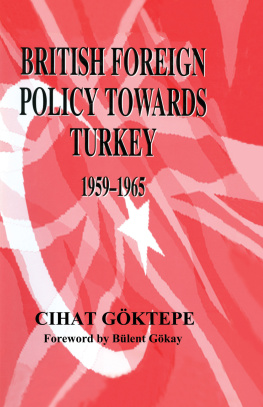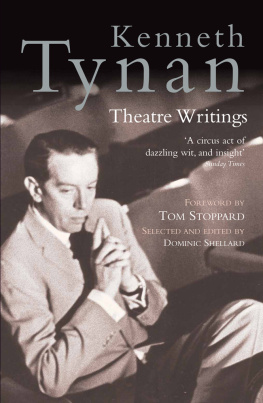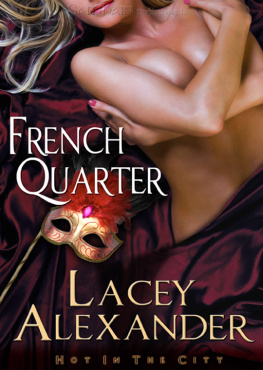Lacey - British Realist Theatre: New Wave in its Context, 1956-1965
Here you can read online Lacey - British Realist Theatre: New Wave in its Context, 1956-1965 full text of the book (entire story) in english for free. Download pdf and epub, get meaning, cover and reviews about this ebook. City: London and New York, year: 2011;1995, publisher: Taylor and Francis;Routledge, genre: Politics. Description of the work, (preface) as well as reviews are available. Best literature library LitArk.com created for fans of good reading and offers a wide selection of genres:
Romance novel
Science fiction
Adventure
Detective
Science
History
Home and family
Prose
Art
Politics
Computer
Non-fiction
Religion
Business
Children
Humor
Choose a favorite category and find really read worthwhile books. Enjoy immersion in the world of imagination, feel the emotions of the characters or learn something new for yourself, make an fascinating discovery.
British Realist Theatre: New Wave in its Context, 1956-1965: summary, description and annotation
We offer to read an annotation, description, summary or preface (depends on what the author of the book "British Realist Theatre: New Wave in its Context, 1956-1965" wrote himself). If you haven't found the necessary information about the book — write in the comments, we will try to find it.
Lacey: author's other books
Who wrote British Realist Theatre: New Wave in its Context, 1956-1965? Find out the surname, the name of the author of the book and a list of all author's works by series.
British Realist Theatre: New Wave in its Context, 1956-1965 — read online for free the complete book (whole text) full work
Below is the text of the book, divided by pages. System saving the place of the last page read, allows you to conveniently read the book "British Realist Theatre: New Wave in its Context, 1956-1965" online for free, without having to search again every time where you left off. Put a bookmark, and you can go to the page where you finished reading at any time.
Font size:
Interval:
Bookmark:

When John Osborne's Look Back in Anger exploded onto the British stage in 1956, it was described as the best young play of the decade; more recently it was dismissed as a pice of undiluted misogyny. Clearly the critical fortunes of both Osborne's play and of the New Wave of dramatists, actors and directors who followed him onto the stage have varied in the intervening years. Unarguably, though, the period of 19561965 was a defining moment in post-war British theatre history, in which new possibilities arose for a contemporary and engaged drama. Drawing on a range of sources, Stephen Lacey argues that the new theatre should be seen in relation to other developments in post-war culture and politics, including social science, the novel and cinema.
The new theatre was regarded as a realist theatre, dramatising the social experience of a working-class under threat from the new prosperity. However, despite the currency of the term, realism in the period is imperfectly understood and often crudely applied. Arguing that realism is both a tradition of representation and a critical prespective, Lacey examines the connection between particular plays and productions, and the assumptions about theatrical form and oppositional politics that shaped the way that this theatre was valued by its contemporaries.
Stephen Lacey is a Lecturer in Drama at the University of Reading. He has worked extensively in community theatre in Scotland and England.

First published 1995
by Routledge
11 New Fetter Lane, London EC4P 4EE
This edition published in the Taylor & Francis e-Library, 2002.
Simultaneously published in the USA and Canada
by Routledge
29 West 35th Street, New York, NY 10001
Selection and editorial matter
1995 Stephen Lacey
All rights reserved. No part of this book may be reprinted or reproduced or utilized in any form or by any electronic, mechanical, or other means, now known or hereafter invented, including photocopying and recording, or in any information storage or retrieval system, without permission in writing from the publishers.
British Library Cataloguing in Publication Data
A catalogue record for this book is available from the British Library
Library of Congress Cataloguing in Publication Data
A catalogue record for this book has been requested
ISBN 0-415-07782-6 (Print Edition)
0-415-12311-9 (pbk)
ISBN 0-203-18062-3 Master e-book ISBN
ISBN 0-203-20172-8 (Glassbook Format)
To my father, Fred Lacey
I would like to acknowledge the support and encouragement of a great many people, for although a book is meant to be the product of one individual, it is frequently anything but that. The research on which this book is based owes a good deal to the collective discussions conducted at the Centre for Contemporary Cultural Studies at the University of Birmingham during my time as a postgraduate student there; in particular, I would like to thank Michael Green for his patience and advice. I would also like to thank my colleagues and successive generations of students in the Film and Drama Department at Reading University, who have helped me to develop my thinking about this material over a period of time. I am especially grateful to Talia Rodgers, for her patience and enthusiastic support in the face of broken deadlines. And many, many thanks to my familyas ever who had to endure a great deal as this book was nearing completion.
The 1950s was a curious and idiosyncratic decade, which, from the viewpoint of the 1990s, is a reservoir of distant, yet familiar images, close enough to be relevant, yet far enough away to be the object of nostalgia. It was a period of full employment, of prosperity and social stability, of the birth of the age of television, of the New Elizabethan Age and the Coronation; it was also the decade of the teddy-boys, Elvis Presley and rock n roll, of CND and of the Angry Young Men. In effect, these two sets of images are associated with the two halves of the decade, with 1956 as the watershed, marking off a then from a now in cultural and political history.
Theatre's contribution to this cultural moment was the much-mythicised first performance of Look Back in Anger. Criticism of Look Back in Angerand what followed ithas a strong smell of the barricades about it. Taylor described it as a revolution (Taylor 1962:28) and military metaphors abound in most accounts of this proletarian upsurge of emancipated working-class writers in rebellion. Even writers with a more critical stance towards the plays and the theatrical and political values of the New Wave (as we shall call it) accept that this period was crucial and formative for what is now the mainstream of British theatre (McGrath 1981:9). David Edgar has written:
The date, 8 May 1956, was the last great U-turn in the British theatre. Certainly, whether Osborne likes it or not (and he probably doesn't) all the subsequent waves of the new British theatre follow the agenda he set.
(Edgar 1988:138)
This agenda is actually rather hard to specify, whether one looks for it in Osborne's work or in that of the New Wave generally; indeed, the term New Wave is itself highly problematic. Viewed in terms of the plays alone, the moment of the late fifties and early sixties is a difficult moment to map with any confidence: there are no manifestos, no obvious schools of writing (certainly no school of Osborne), and a diverse, if overlapping, set of concerns. This has not changed over the years; indeed, the sense of a defining contextual moment has lessened as traditional literary criteria have reasserted themselves, and independent authorial studies of key figures have become the dominant pattern.
It is also the case that the New Wave, and especially Look Back in Anger, no longer appears as seminal as it once did. It seems, quite simply, a different play that we see today from the one that so shocked and inspired its initial audiences. As one commentator recently wrote, stripped of its context it now looks like a feeble period piece, occasionally fuelled by Osborne's own rage [and] what looked like politically subversive polemic now looks like mere rudeness (French 1991). I first taught the play to undergraduates in the late 1970s, when a generation of more revolutionary play-wrightsincluding McGrath and Edgarhad altered the agenda significantly, leaving students bemused about the politics of this famously revolutionary play. A few years later, its politics had become an issue once moreonly this time it was the play's representation of sexuality and gender, its sexual politics, that surfaced, and what had seemed a leftish scream against the constraints of mid-fifties conformism, appeared as an unpleasant apology for misogyny (see ).
It is possible now to write a very different historyprobably several different historiesof this over-mythicised period. One such revisionist account would centre on Beckett and Peter Hall's production of Waiting for Godot (1955) as the crucial and defining theatrical event (and, perhaps, revalue the work of John Whiting). Such an account would emphasise aesthetically innovatory practices, both in writing and its theatrical articulation, and would not foreground questions of realism. In retrospect, there would clearly be a logic to this, given Beckett's subsequent reputation (notwithstanding the general bafflement that greeted
Font size:
Interval:
Bookmark:
Similar books «British Realist Theatre: New Wave in its Context, 1956-1965»
Look at similar books to British Realist Theatre: New Wave in its Context, 1956-1965. We have selected literature similar in name and meaning in the hope of providing readers with more options to find new, interesting, not yet read works.
Discussion, reviews of the book British Realist Theatre: New Wave in its Context, 1956-1965 and just readers' own opinions. Leave your comments, write what you think about the work, its meaning or the main characters. Specify what exactly you liked and what you didn't like, and why you think so.

